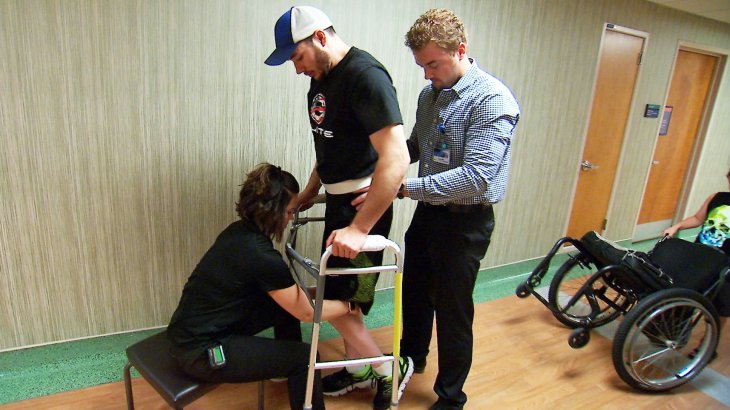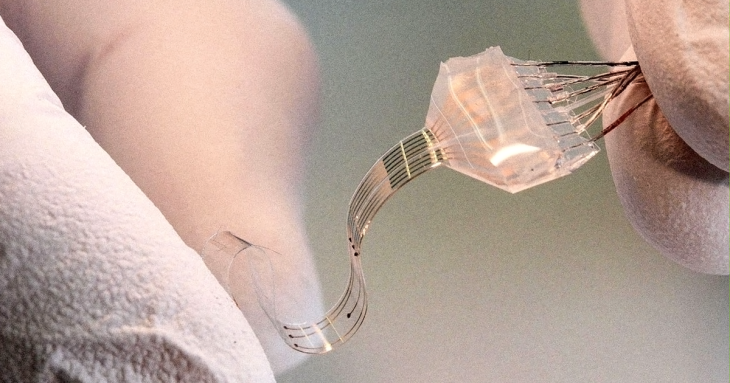Regaining The Ability To Walk In A Paralysis Man With Electrical Stimulation
Aaliya Satavelekar - Oct 31, 2018

Electrical simulation helps a man with paralyzed leg walk again. A life spending totally in a wheelchair is the sure definition of lower limb paralysis patients, if their spinal cord is damaged.
- IBM Has Developed A New Battery That's Better, Safer Than Lithium-Ion
- This Electric Car Will Have A 5G Link To Connected Cars And Citites
- Hyundai To Introduce Foldable E-Scooter With 'Last Mile' Rides
However, this diagnosis seems not to last forever, since a new treatment is recently published: The ability to walk again after being immobilized for 5 years is regained with electrical invigoration to the spine of the 29-year-old patient, provided by a device.

Step by step
As stated in a study that Nature Medicine has published on Monday, a new treatment was found.
After that, Mayo clinic, with the approval of FDA (Food and Drug Administration) of pain relief, implanted an electrode in the patient’s back. They, then, could control the pulses released by the device, to electrical stimulation current to the patient’s spine.

Small walks
In 43 weeks of 113 physical therapy sessions, a variety of combinations of electrical invigoration and other stimulations have been tested.
Slowly, his legs could move, although the patient had to keep track of his movements through a mirror at first, because, their sensitiveness has not regained, and physicians ought to support him in standing and shifting the body weight.
Finally, he could take 331 steps with a front-wheeled walker, and sometimes need physicians’ helps. The length of steps he took was about 100 metres, or even longer than the distance of a football field’s ends.
His capability to walk decreased 50% if the device is shut down, which means the electrical stimulation is the main contributor to his walking retrieve.
First moves
Electrical stimulation has helped regaining the walking ability in humans a lot of times, but the new research shows that their was not a coincident in that first instance.
That’s what we want to hear about. The not-so-bright news is that we do not have many clues to prove why their treatment functioned the way it did.
Next, we are going to dig deeper into that problem, to see if this stimulation could have the same effects on other paralysis, Lee said in the interview.
As the physicians and neurosurgeons have begun their attempts to it by an implantation of the device in one or more other patients, the results are not yet to find out. However, if they are as interesting as the results published on Monday, we are sure stepping to the next level and going closer to eradicate lifetime total lower limb paralysis.
Featured Stories

ICT News - Jul 05, 2025
Windows 11 is Now the Most Popular Desktop OS in the World

ICT News - Jul 02, 2025
All About Florida’s Alligator Alcatraz: A Smart Move for Immigration Control

ICT News - Jun 25, 2025
AI Intimidation Tactics: CEOs Turn Flawed Technology Into Employee Fear Machine

ICT News - Jun 24, 2025
Tesla Robotaxi Finally Hits the Streets: $4.20 Rides That'll Make You Hold Your...

ICT News - Jun 24, 2025
World's First Flying Humanoid Robot Takes Flight

ICT News - Jun 24, 2025
When Closed Source Met Open Source: Bill Gates Finally Meets Linus Torvalds After...

Gadgets - Jun 23, 2025
COLORFUL SMART 900 AI Mini PC: Compact Power for Content Creation

ICT News - Jun 22, 2025
Neuralink Telepathy Chip Enables Quadriplegic Rob Greiner to Control Games with...

ICT News - Jun 20, 2025
Tesla vs Zoox vs Waymo: Who would win?

ICT News - Jun 19, 2025
Comments
Sort by Newest | Popular